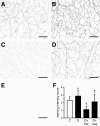The transforming growth factor-beta pathway is a common target of drugs that prevent experimental diabetic retinopathy
- PMID: 19401417
- PMCID: PMC2699853
- DOI: 10.2337/db08-1008
The transforming growth factor-beta pathway is a common target of drugs that prevent experimental diabetic retinopathy
Abstract
Objective: Prevention of diabetic retinopathy would benefit from availability of drugs that preempt the effects of hyperglycemia on retinal vessels. We aimed to identify candidate drug targets by investigating the molecular effects of drugs that prevent retinal capillary demise in the diabetic rat.
Research design and methods: We examined the gene expression profile of retinal vessels isolated from rats with 6 months of streptozotocin-induced diabetes and compared it with that of control rats. We then tested whether the aldose reductase inhibitor sorbinil and aspirin, which have different mechanisms of action, prevented common molecular abnormalities induced by diabetes. The Affymetrix GeneChip Rat Genome 230 2.0 array was complemented by real-time RT-PCR, immunoblotting, and immunohistochemistry.
Results: The retinal vessels of diabetic rats showed differential expression of 20 genes of the transforming growth factor (TGF)-beta pathway, in addition to genes involved in oxidative stress, inflammation, vascular remodeling, and apoptosis. The complete loop of TGF-beta signaling, including Smad2 phosphorylation, was enhanced in the retinal vessels, but not in the neural retina. Sorbinil normalized the expression of 71% of the genes related to oxidative stress and 62% of those related to inflammation. Aspirin had minimal or no effect on these two categories. The two drugs were instead concordant in reducing the upregulation of genes of the TGF-beta pathway (55% for sorbinil and 40% for aspirin) and apoptosis (74 and 42%, respectively).
Conclusions: Oxidative and inflammatory stress is the distinct signature that the polyol pathway leaves on retinal vessels. TGF-beta and apoptosis are, however, the ultimate targets to prevent the capillary demise in diabetic retinopathy.
Figures





References
Publication types
MeSH terms
Substances
Grants and funding
LinkOut - more resources
Full Text Sources
Medical

